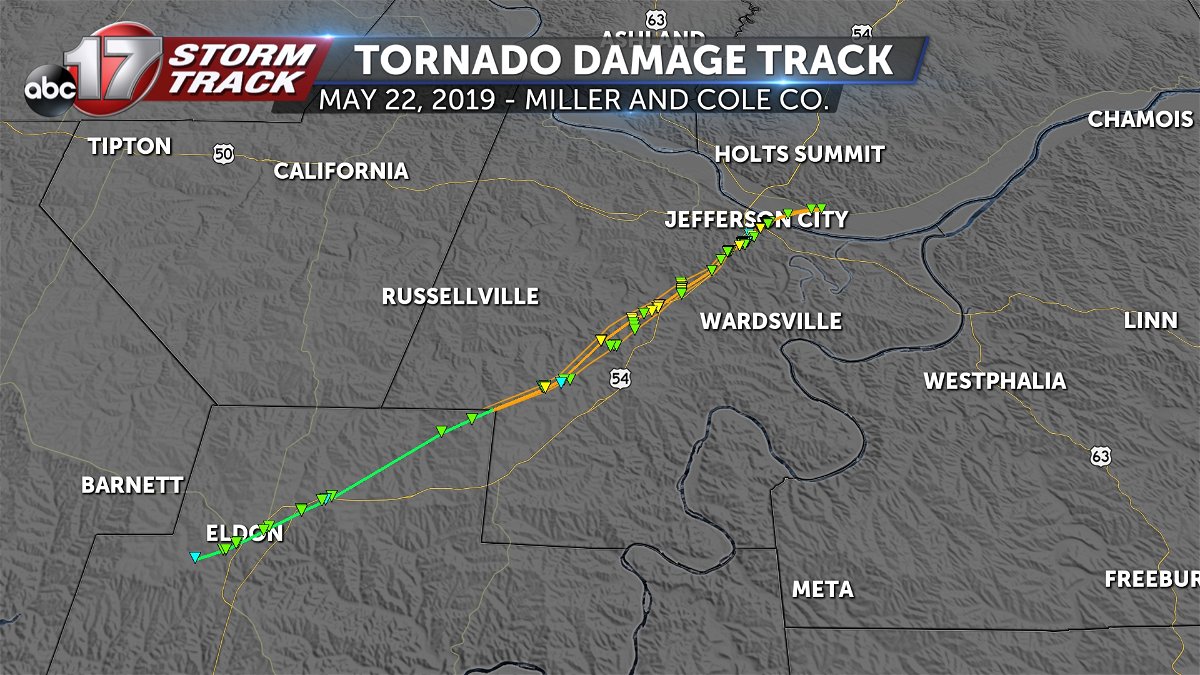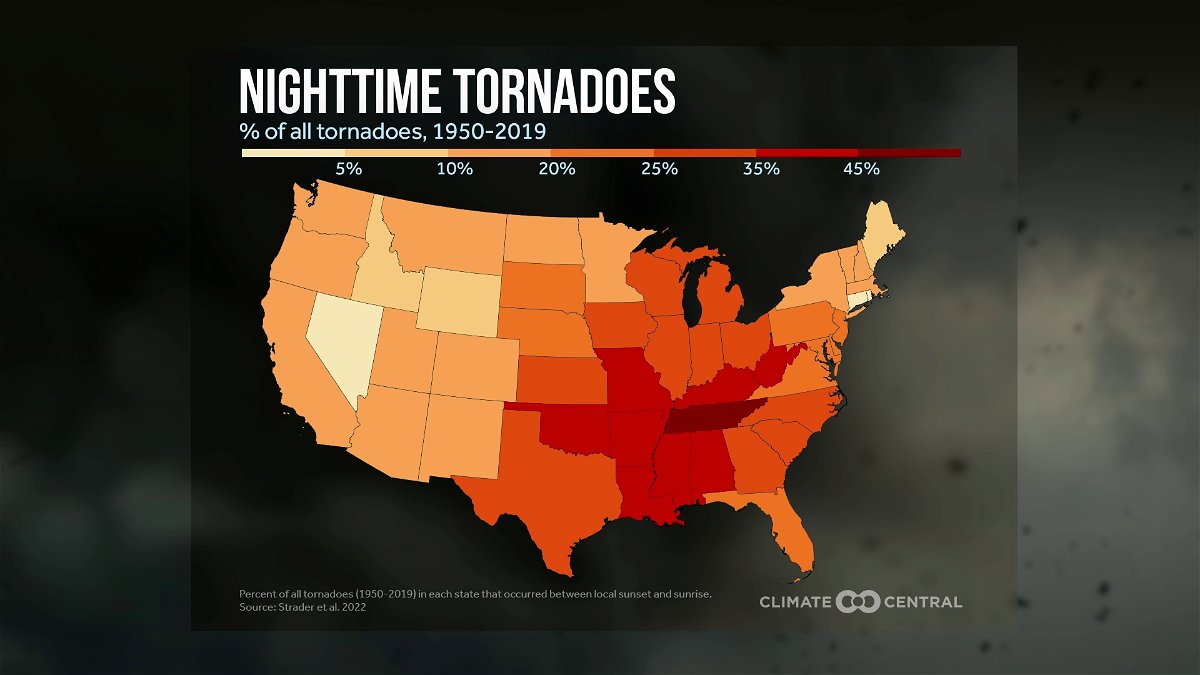Messaging for nighttime tornadoes continues to be a top priority following Jefferson City tornado in 2019
JEFFERSON CITY, Mo. (KMIZ)
On May 22, 2019, the National Weather Service in St. Louis issued its first-ever Tornado Emergency as an EF-3 tornado tore through the capital city just before midnight.

“We knew there was a strong tornado on the ground. We had debris up to 15,000 feet and we knew where it was going. So you know, the fear of loss of life was real. So that was on our minds as well," said National Weather Service meteorologist Jayson Gosselin.
NWS meteorologists Doug Tilley and Jayson Gosselin were manning the radar that night and had to quickly coordinate with the rest of the office staff to upgrade the warning to an emergency after the initial warning for Cole County came out about half an hour prior.
“The second tornado warning seems to have been what got people to act," Tilley said. "They sounded the sirens a second time, that’s when you know people said, this one means business, and that’s when they took shelter. Hopefully, through that, we managed to save some lives."
Tornado emergencies are a rare, but dire alert officially created in 1999 when NWS meteorologists in Norman, Oklahoma, issued one for an EF-5 that was tearing through the Oklahoma City suburbs. These are reserved for when a violent tornado has been observed and is causing catastrophic damage that has been reported by spotters and/or confirmed by radar to be lofting debris, heading toward a population center.
The nighttime factor can make messaging tornadoes even harder, and more life-threatening.
Stephen Strader, a professor at Villanova University, shares alarming data showing that while daytime tornado deaths are decreasing due to better warnings, radar data, building codes and social media, the number of nighttime fatalities continues to go up.
“We’re not really seeing a huge difference in the number of people killed, but we’re seeing more people, a greater proportion of people killed during these nocturnal time periods. And that’s mostly attributed to overnight tornadoes, which are tornadoes that occur from midnight to sunrise when we’re sleeping, and since about 1900 those deaths have quadrupled," Strader said.

Your risk of being affected by a tornado changes from day to night, as most of us are working somewhere during the day that is separate from our home, and we’re asleep during some of these intense severe storms.

Forty percent of all tornadoes in Missouri happened at night between 1950 and 2019. The number of days that are favorable for tornadoes also continues to increase in our region, with about two to three more tornado days per year since 1979.
Having multiple ways to get warnings and taking them seriously is key and can save your life during nighttime weather emergencies.
NWS warning coordination meteorologist Kevin Deitsch says NOAA is looking into the best ways to balance out severe weather warning lead time.
“Hospitals, for instance, would love an hour lead time if they have to move patients. But Joe Schmo with a basement five steps away, they probably don’t need much lead time at all," Deitsch said. "So striking that balance is really challenging. It’s something we’re kind of doing research on.
"One thing that’s in the works in the Weather Service is what we call probabilistic warnings. So a storm approaches an area, a probability of a tornado might increase. So maybe a hospital’s threshold is when they have a 20% chance of a tornado, whereas someone with a basement five steps away, maybe they would act on an 80% chance."
National Weather Service meteorologists at the office in St. Louis have what they call "spring training," where they work through severe weather case studies to brush up on their warning and tracking skills to pinpoint dangerous threats on radar. Still, when it's real, they work effectively under pressure.
"It's what we trained for, so your training kicks in and you're dealing with just another storm," Tilley said. "To some degree, you don't pay a whole lot of attention to where it's going. But at the same time, you know that it's going to hit a city, and that's why we issued a tornado emergency. We know it's a stronger violent tornado, it's headed into a populated area. On some level you have to kind of keep your professional cool."
Since 2019, only one tornado emergency has been issued by the St. Louis office -- for a storm that moved into Chester, Illinois, in October 2021. Since tornado emergencies became an official alert in 1999, there have been 18 issued in Missouri.
The last one in Mid-Missouri was issued when tornadoes struck in Pettis County in March 2006.
